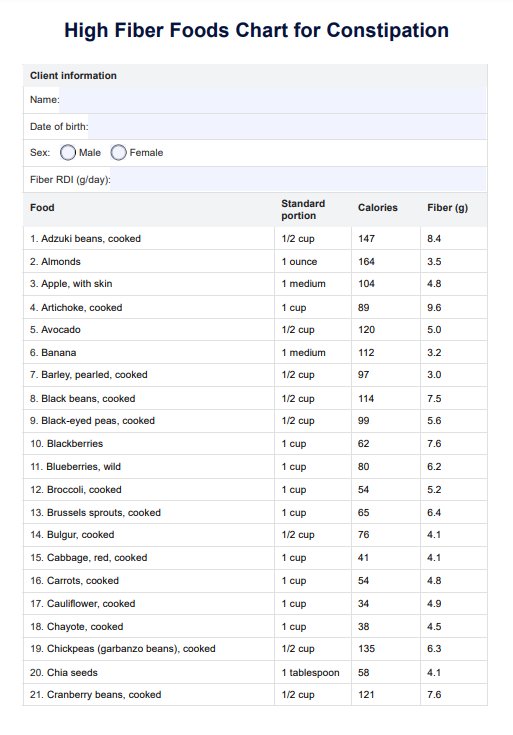High fiber foods charts are typically requested by individuals conscious of their dietary choices and health enthusiasts seeking to increase their fiber intake. Health professionals, such as dietitians and nutritionists, may also use these charts for clients who could benefit from increasing their dietary fiber intake.

High Fiber Foods Chart for Constipation
Download our High Fiber Foods Chart for Constipation. Boost your client's digestive system and improve gut health naturally.
High Fiber Foods Chart for Constipation Template
Commonly asked questions
They can be used when individuals want to improve their digestive health, manage weight, or address specific health concerns. They are often employed during dietary consultations, wellness programs, or as part of a broader effort to promote a balanced, fiber-rich diet.
Although dietary fiber can relieve constipation through water absorption and bulking of stools, overly high fiber diets can have the opposite effect. As such, if you are already reaching your fiber RDI, excess fiber above this is unlikely beneficial and could worsen your digestive problems. It's essential to consult with a dietitian or nutritionist in these cases.
EHR and practice management software
Get started for free
*No credit card required
Free
$0/usd
Unlimited clients
Telehealth
1GB of storage
Client portal text
Automated billing and online payments











